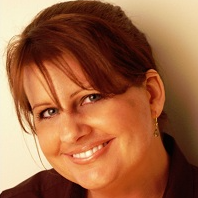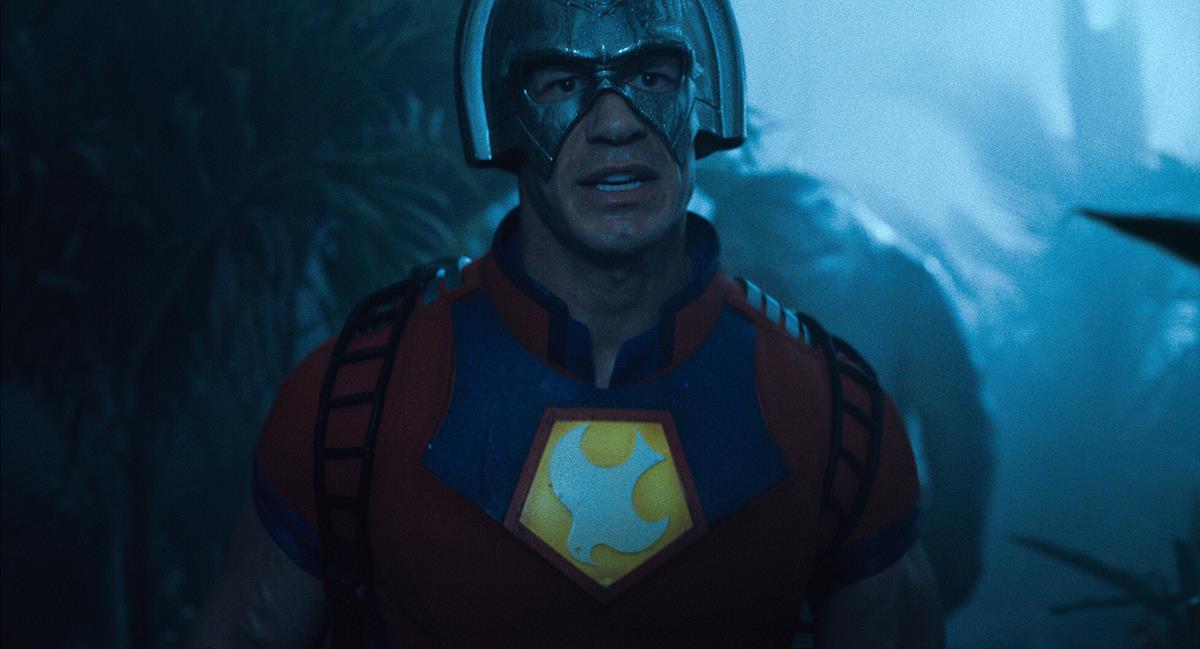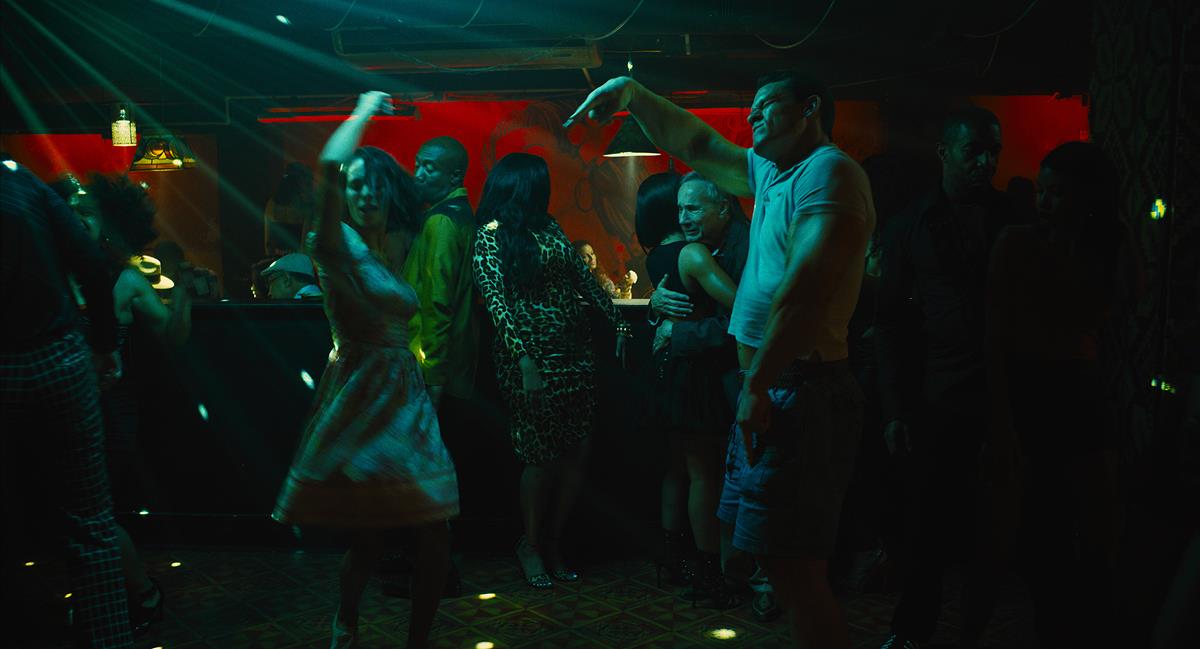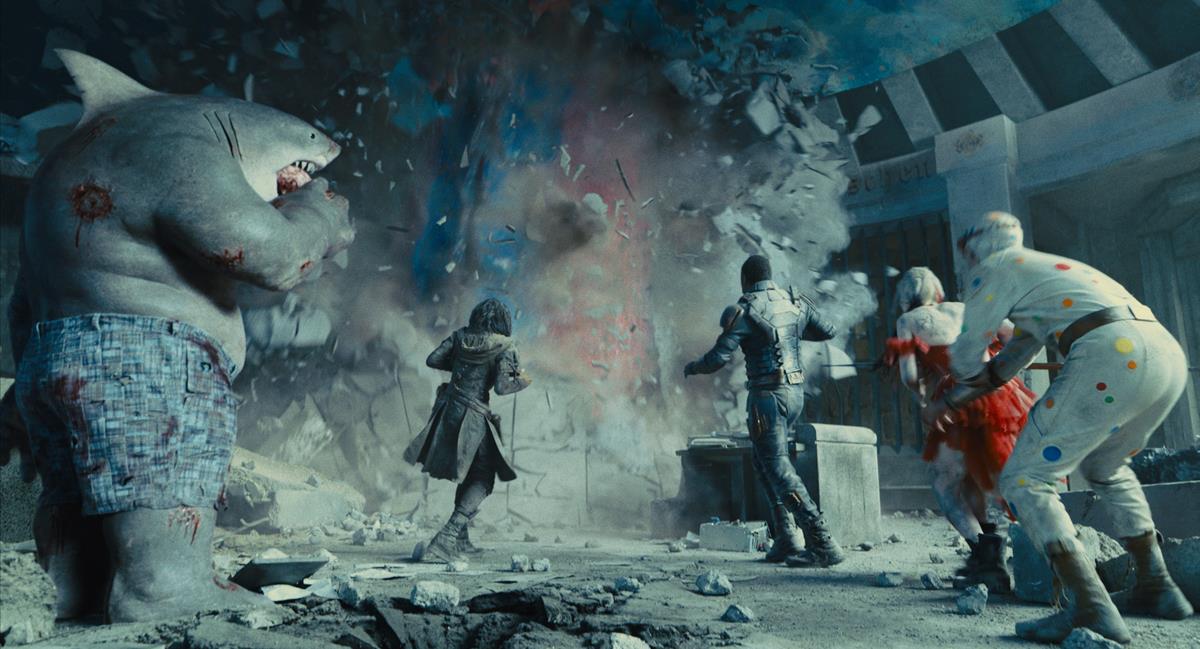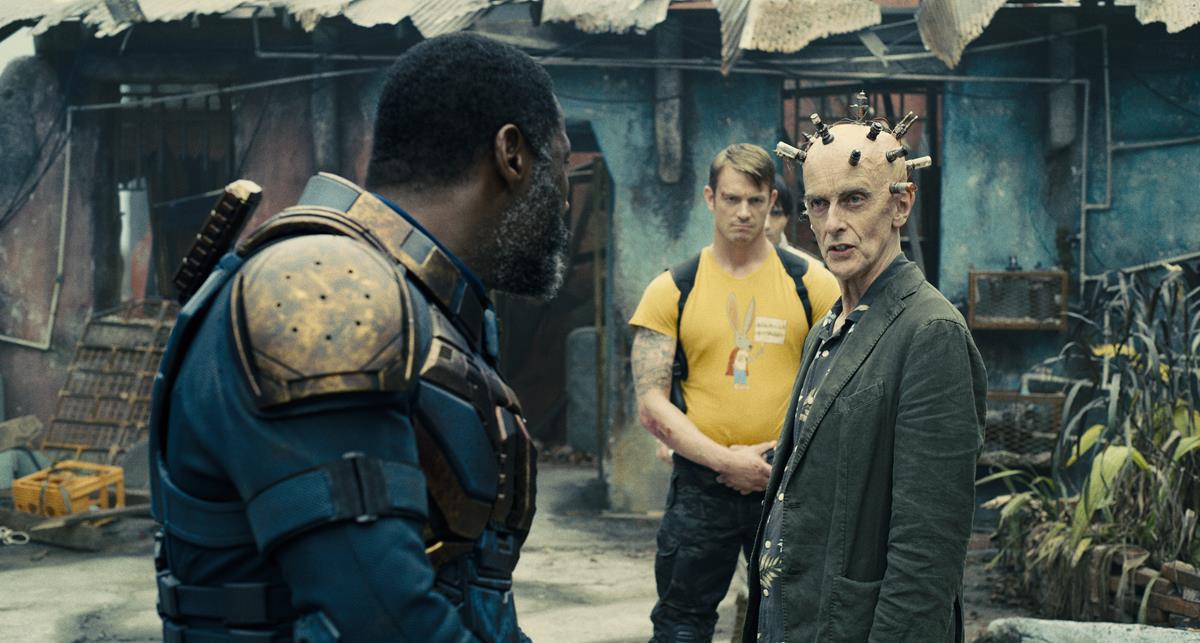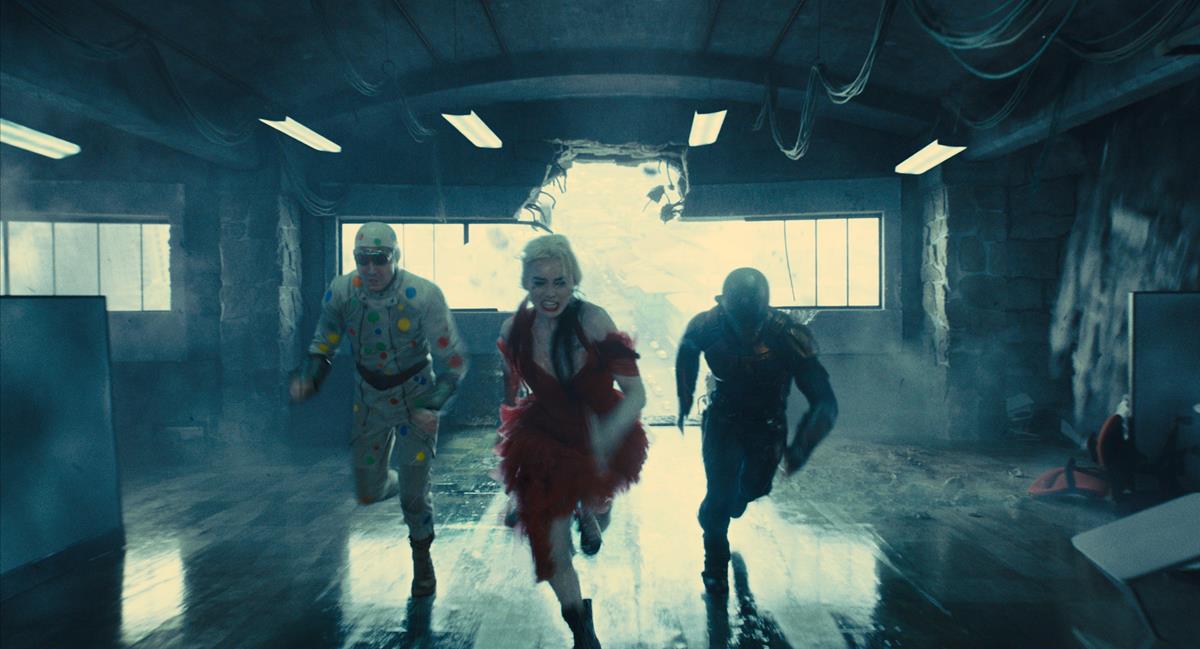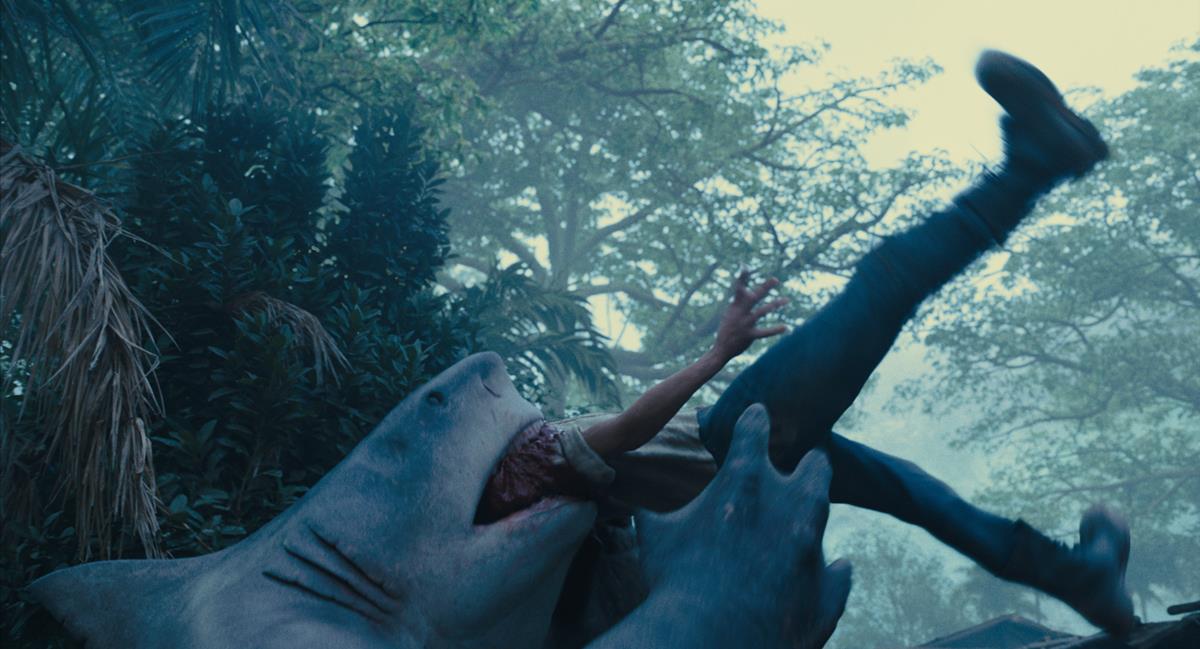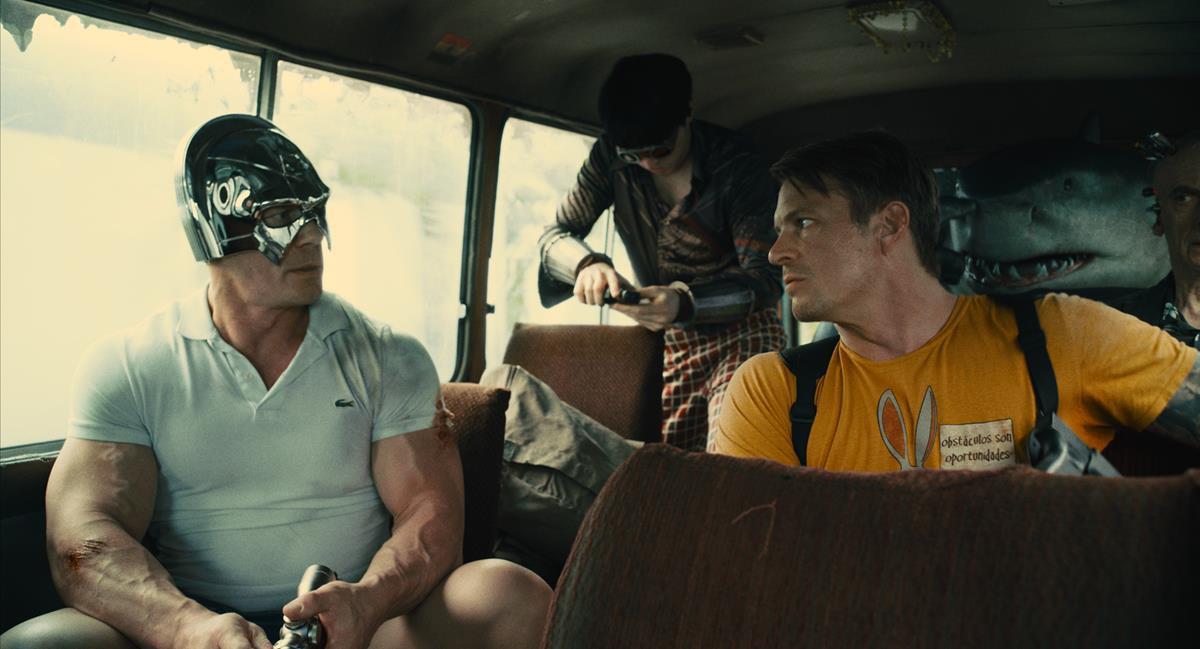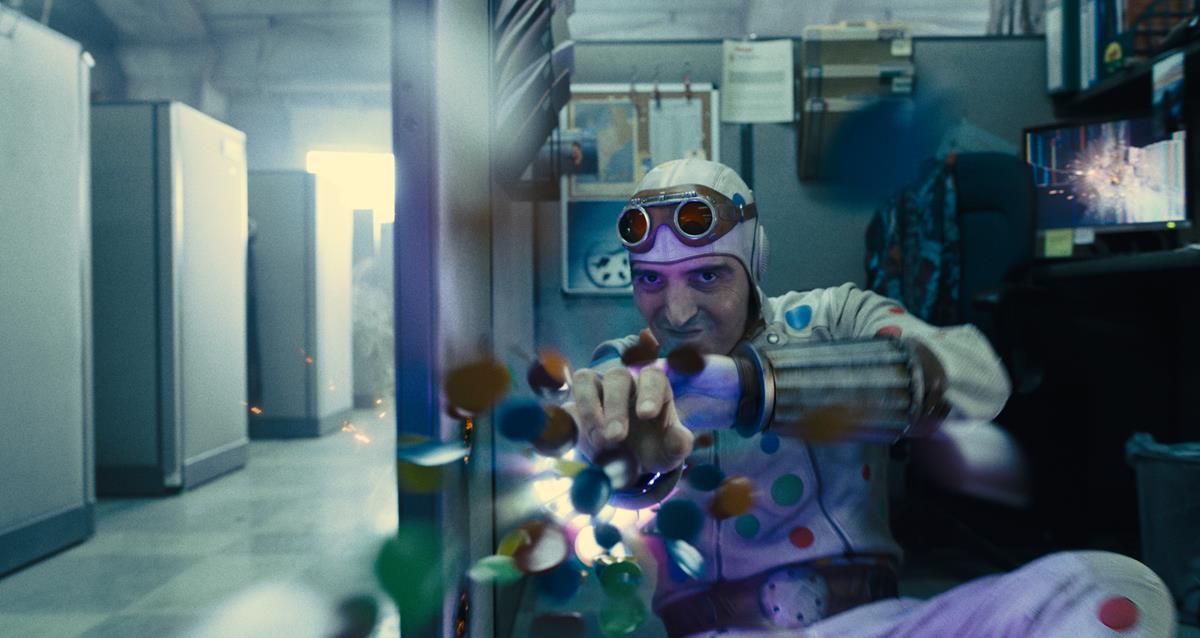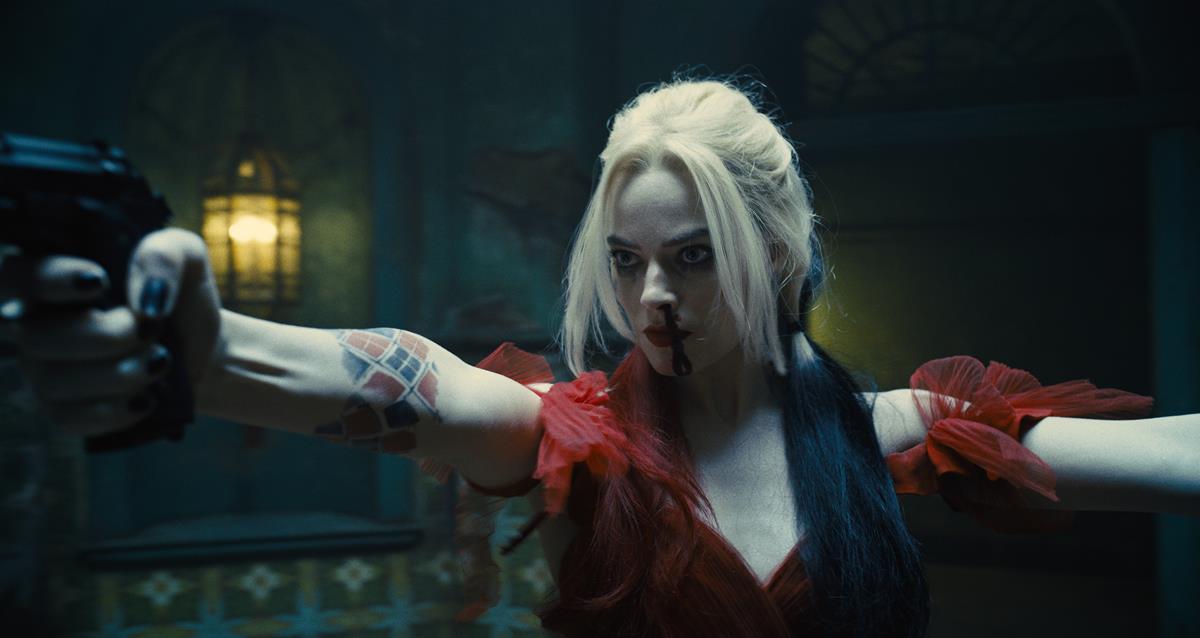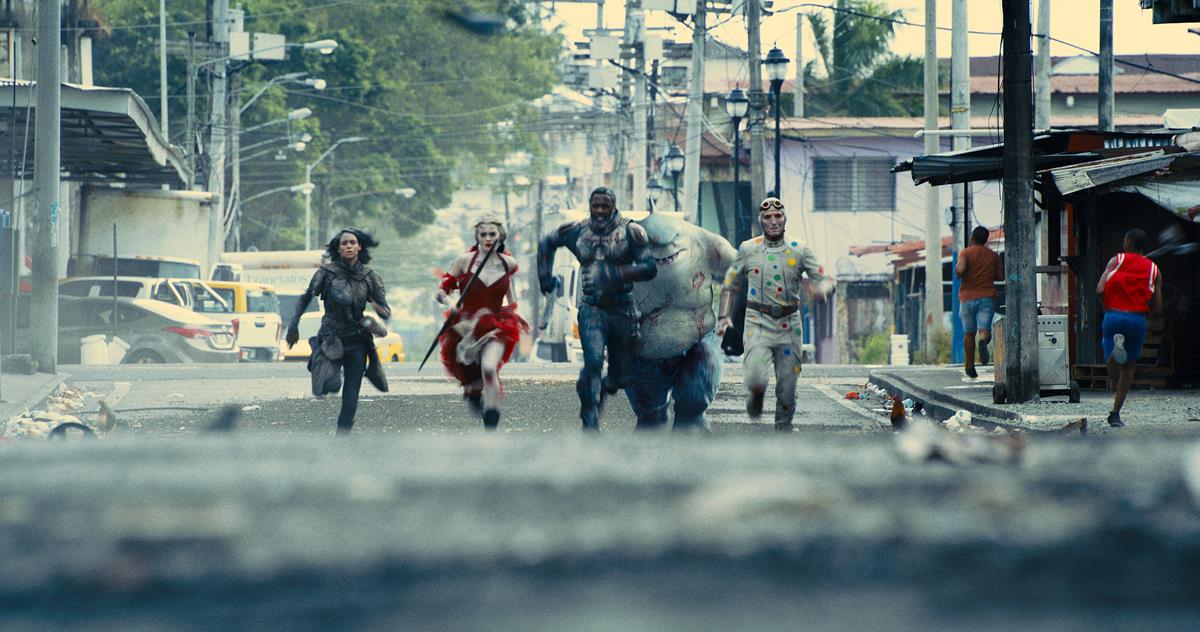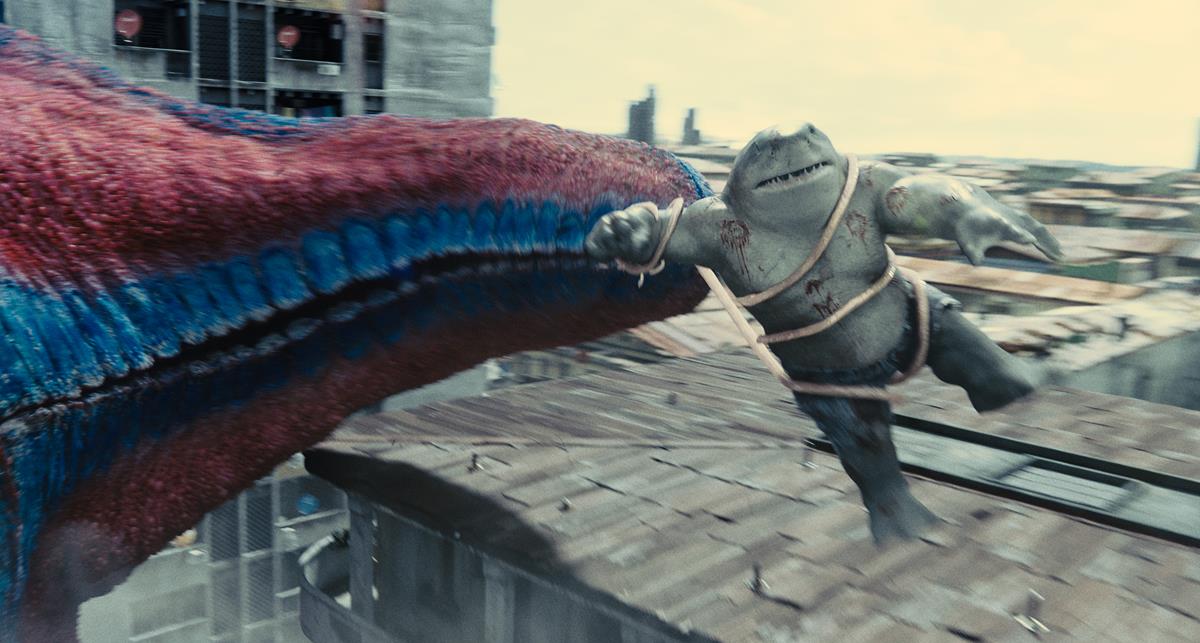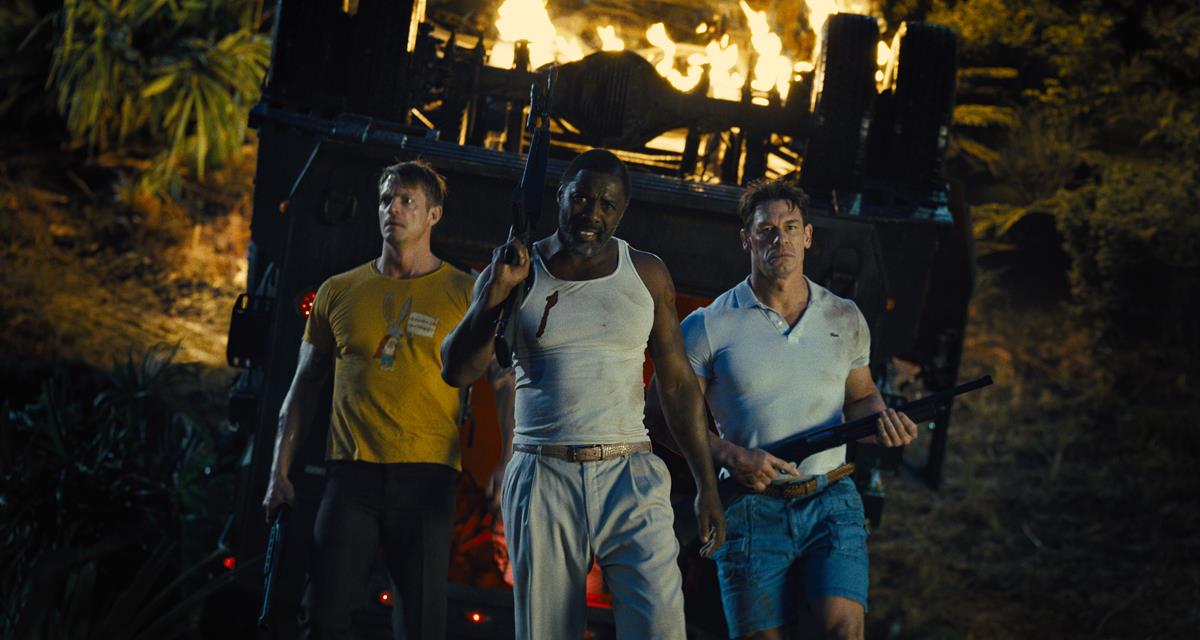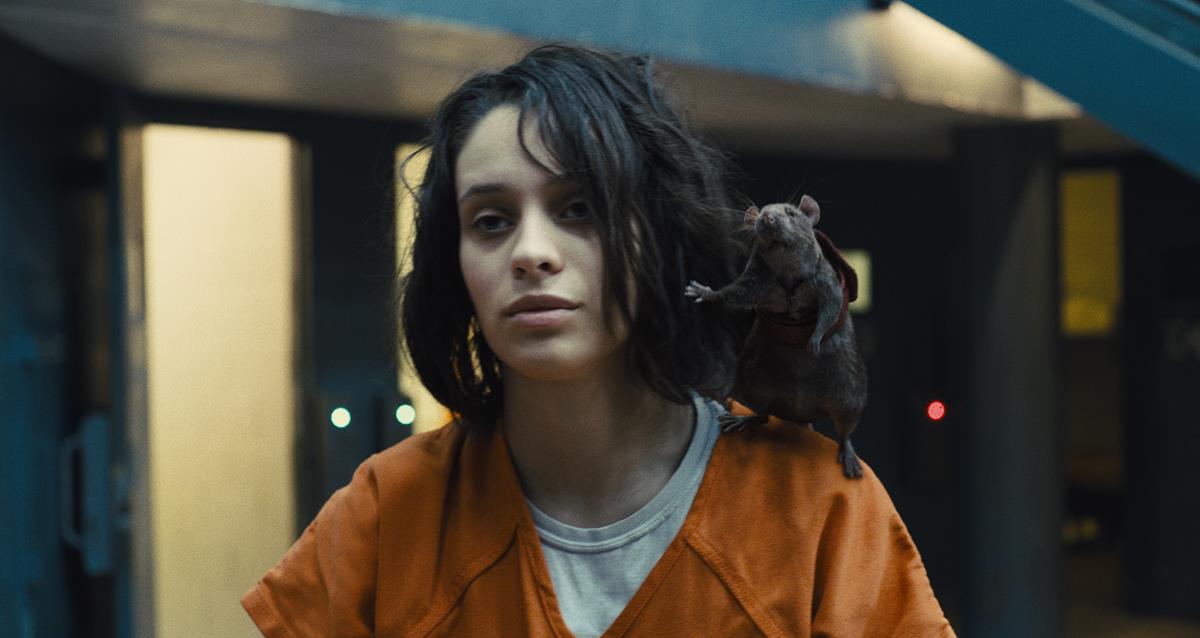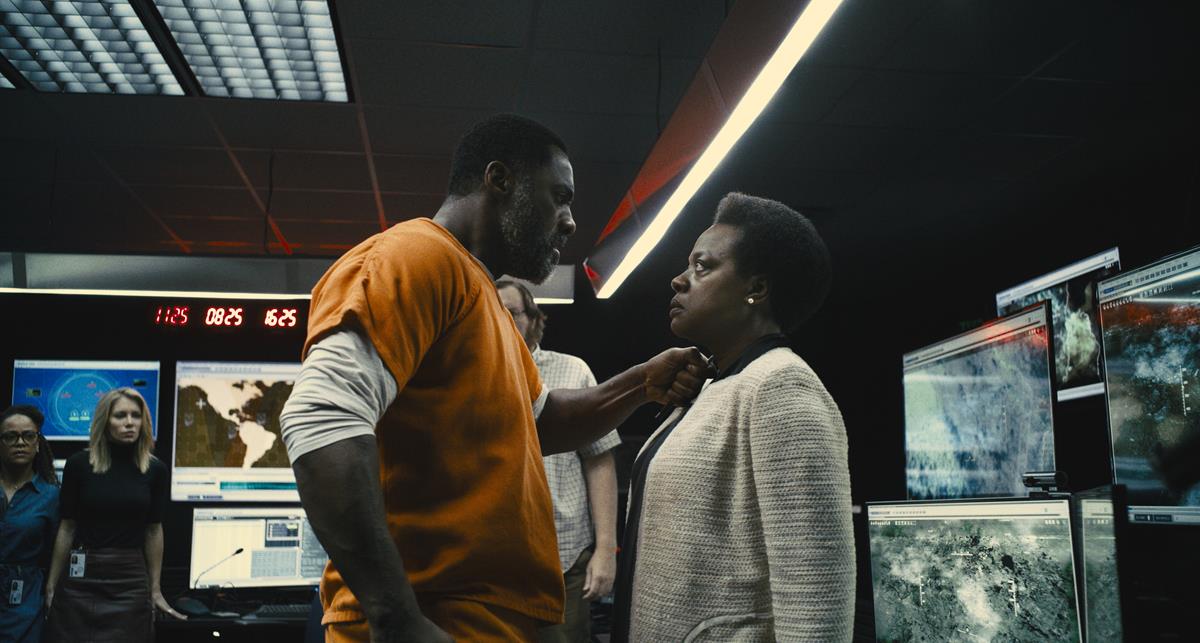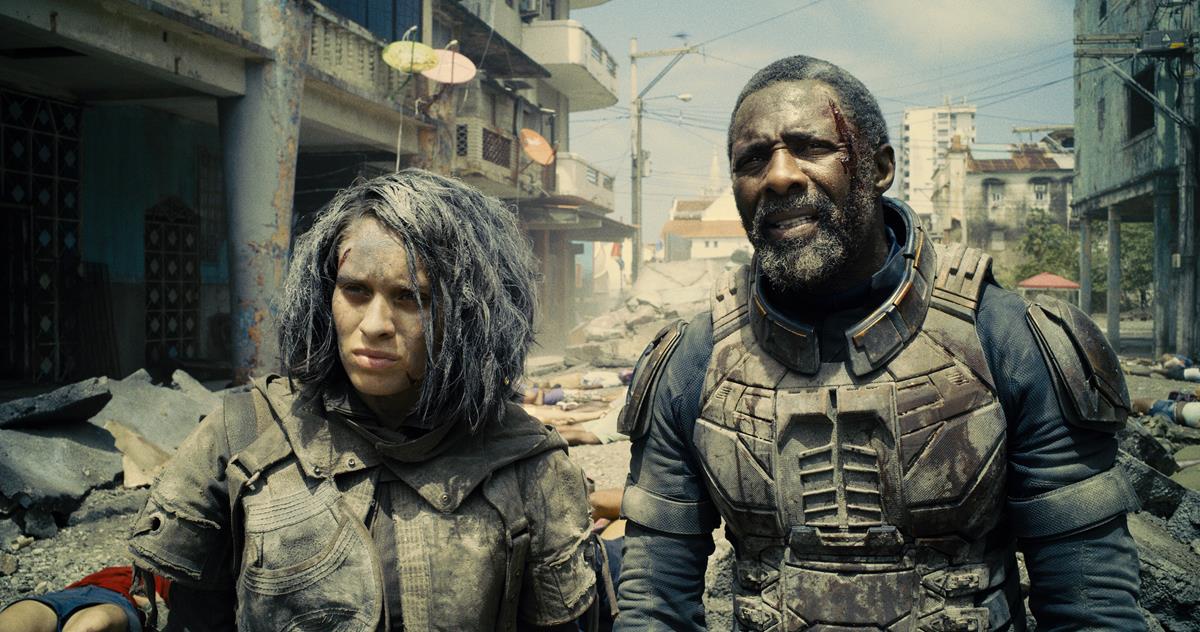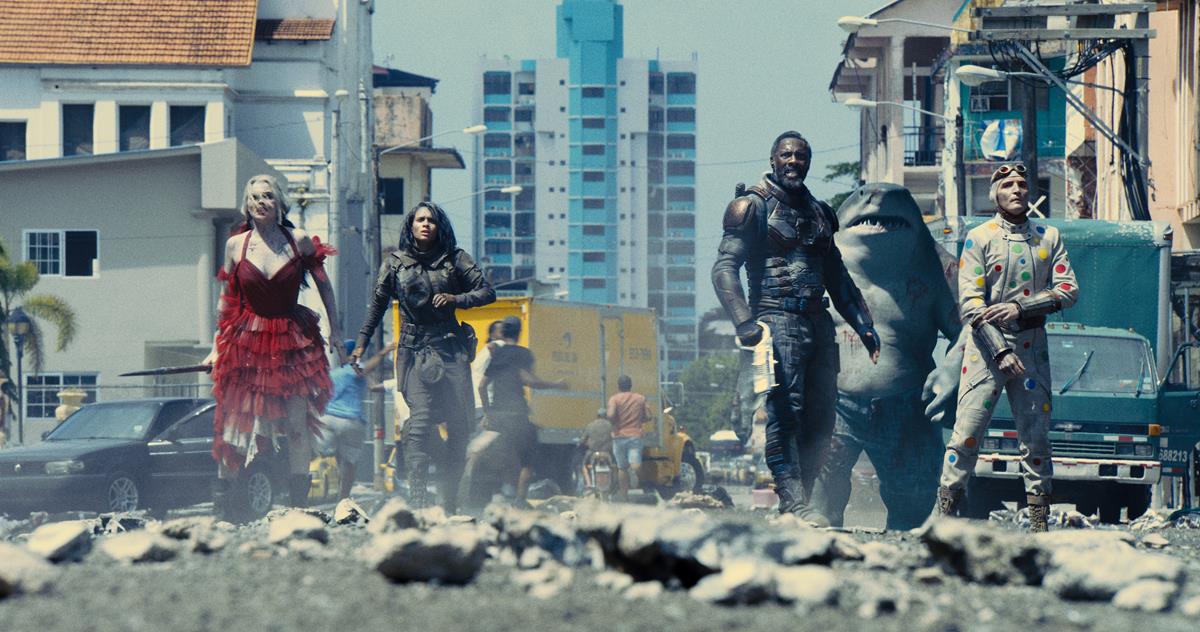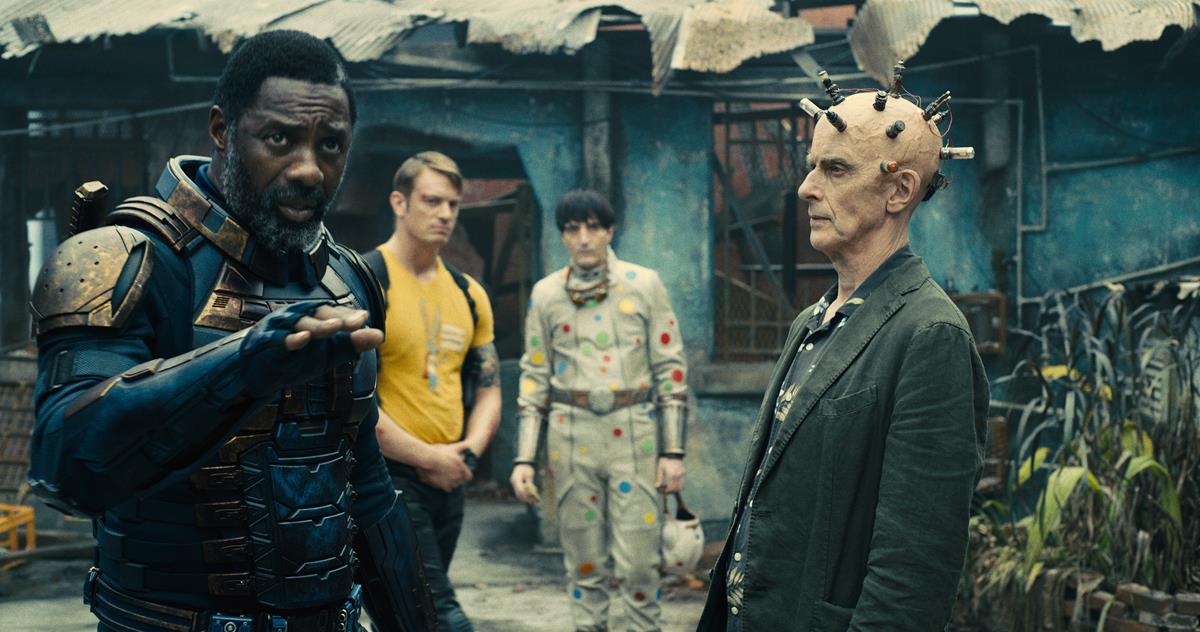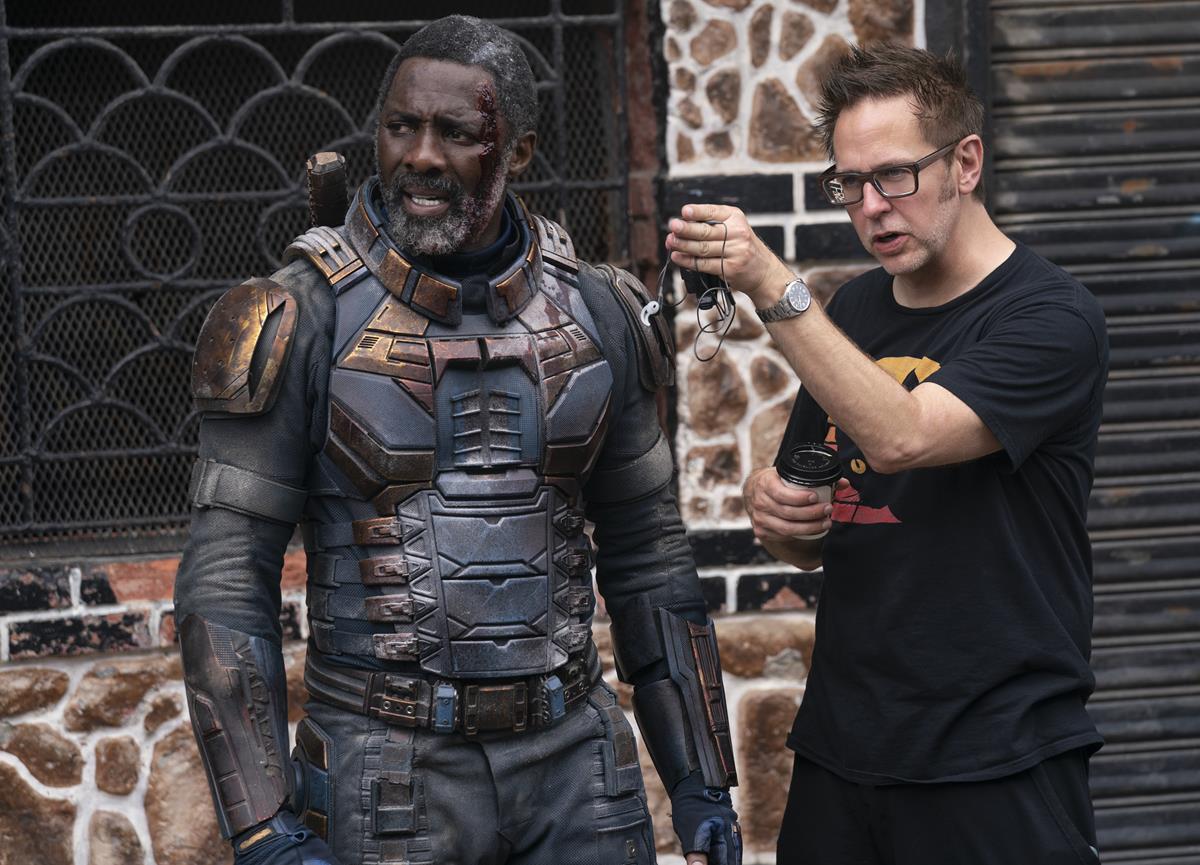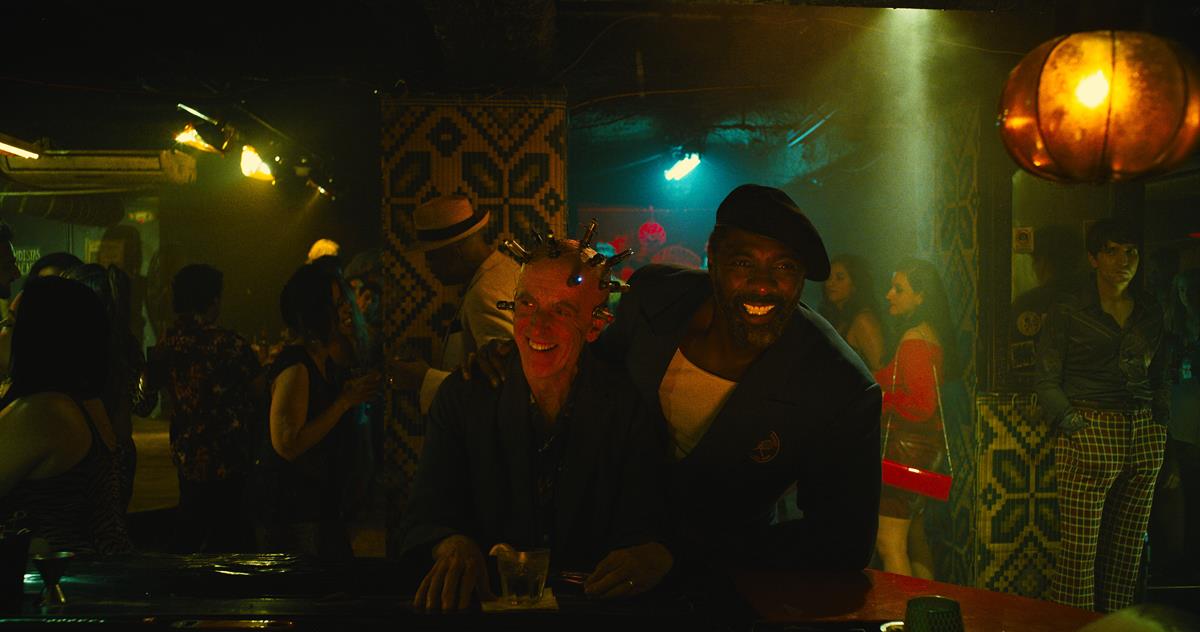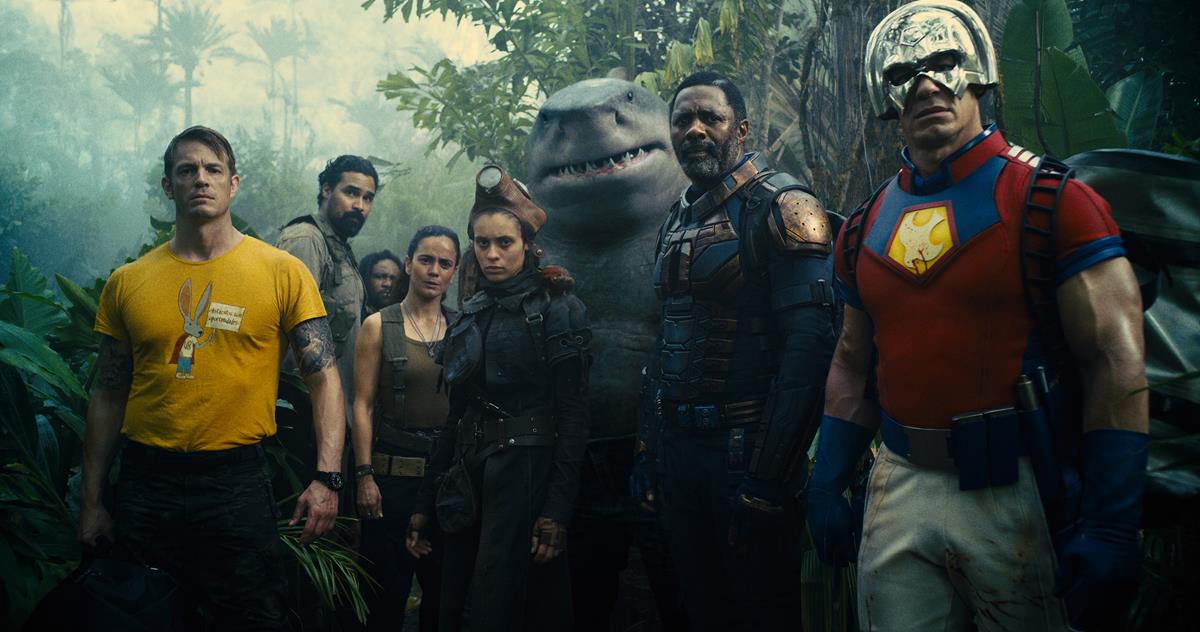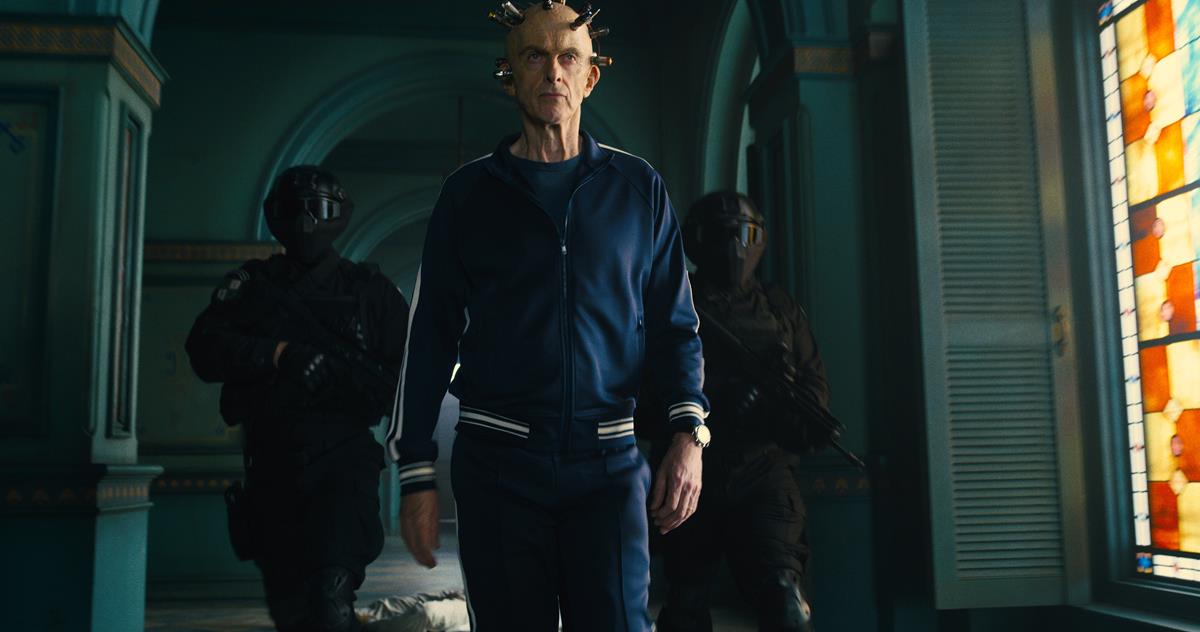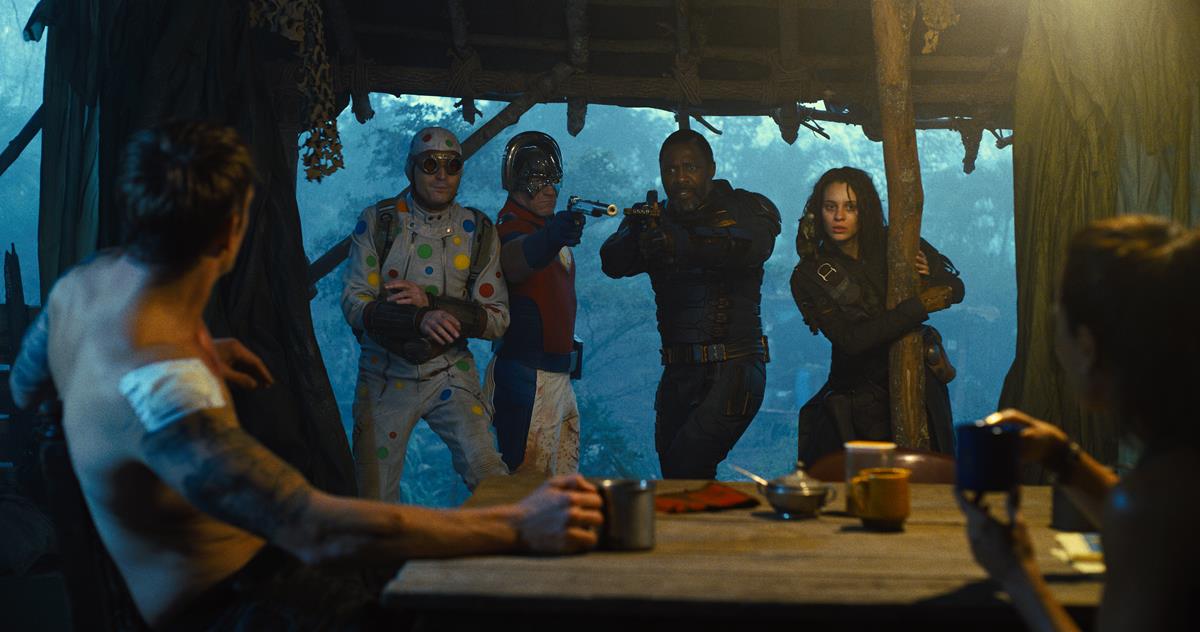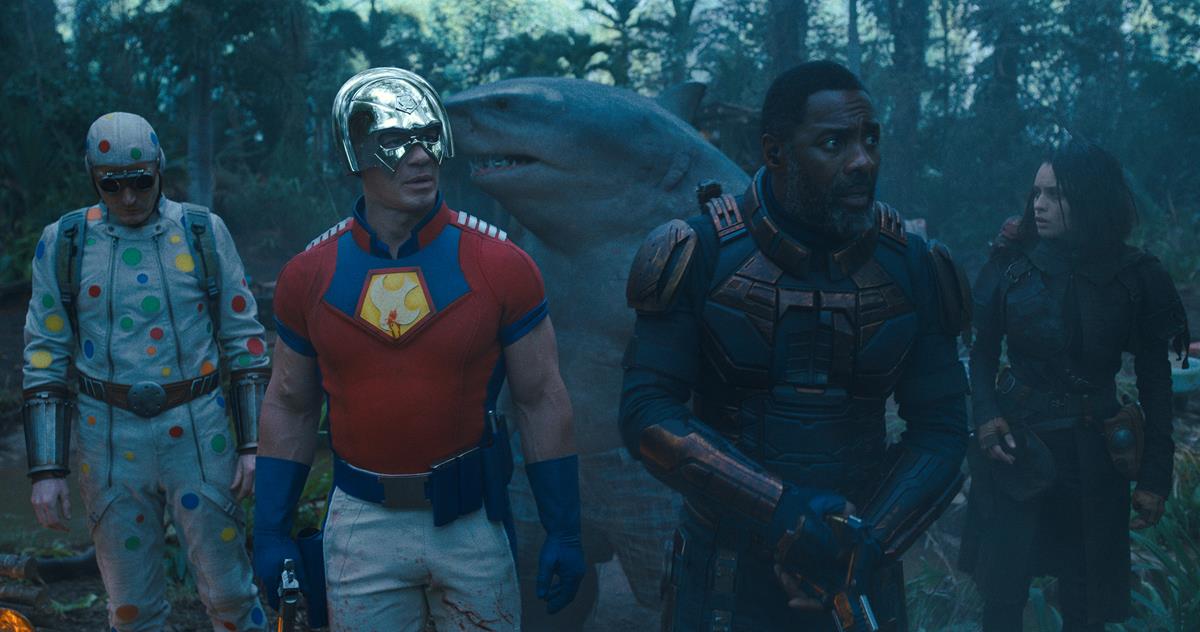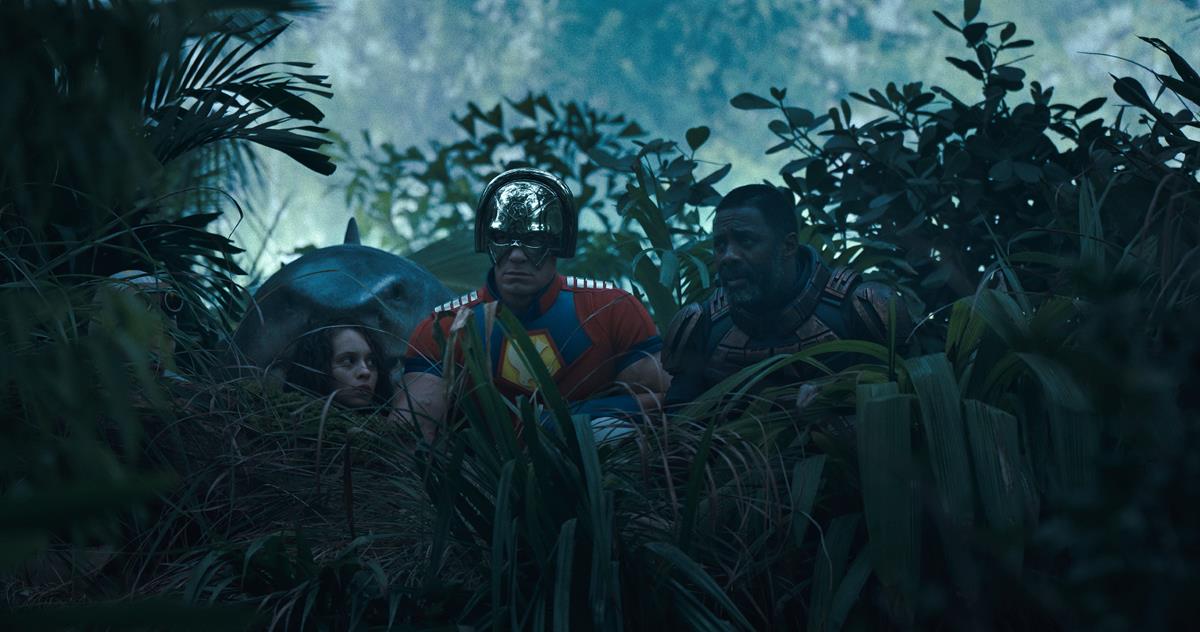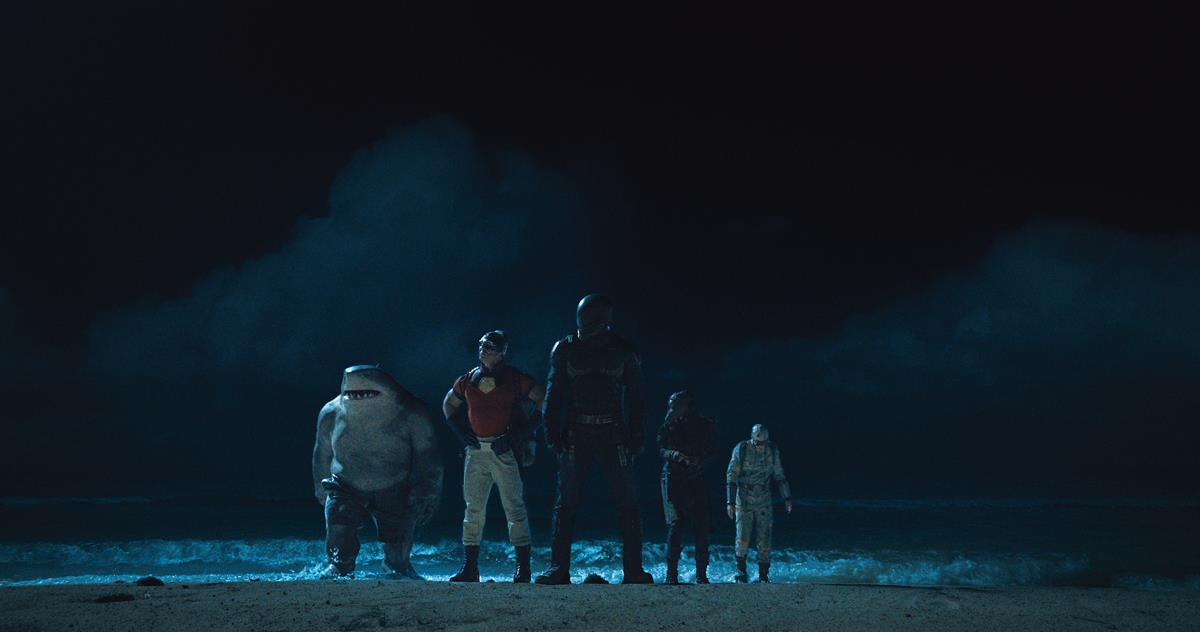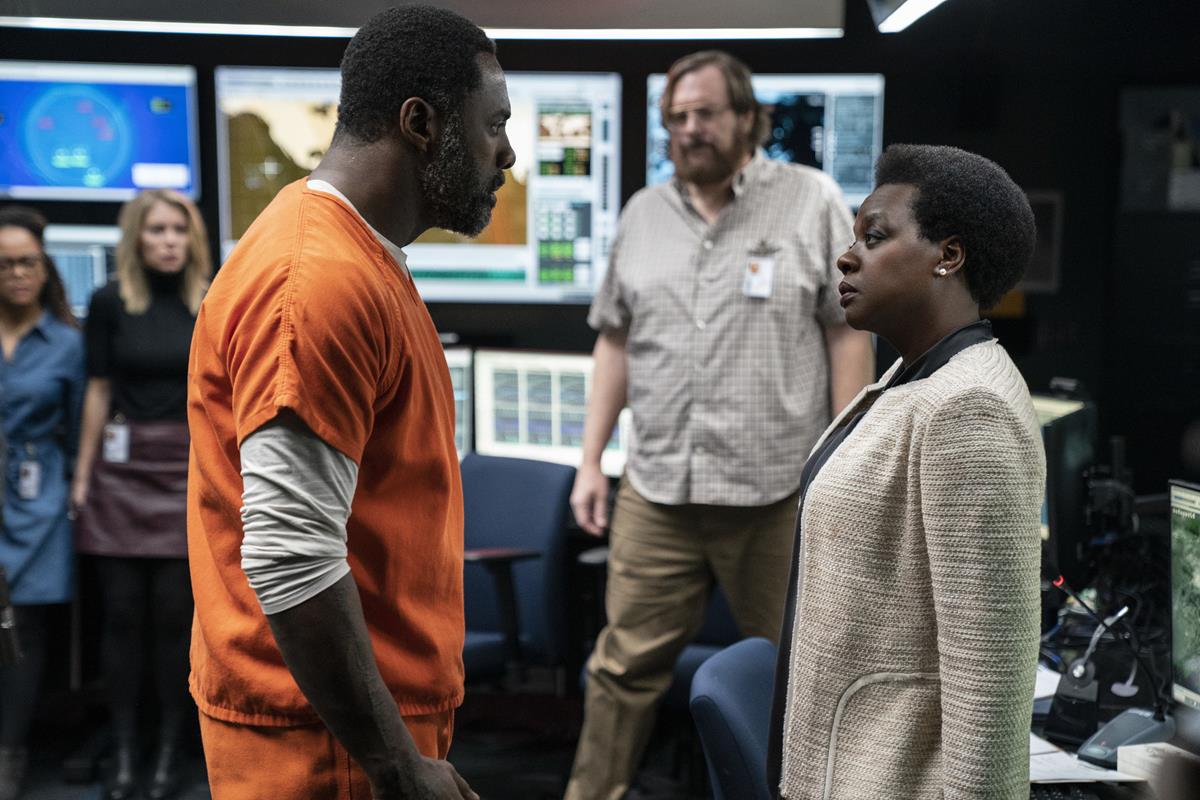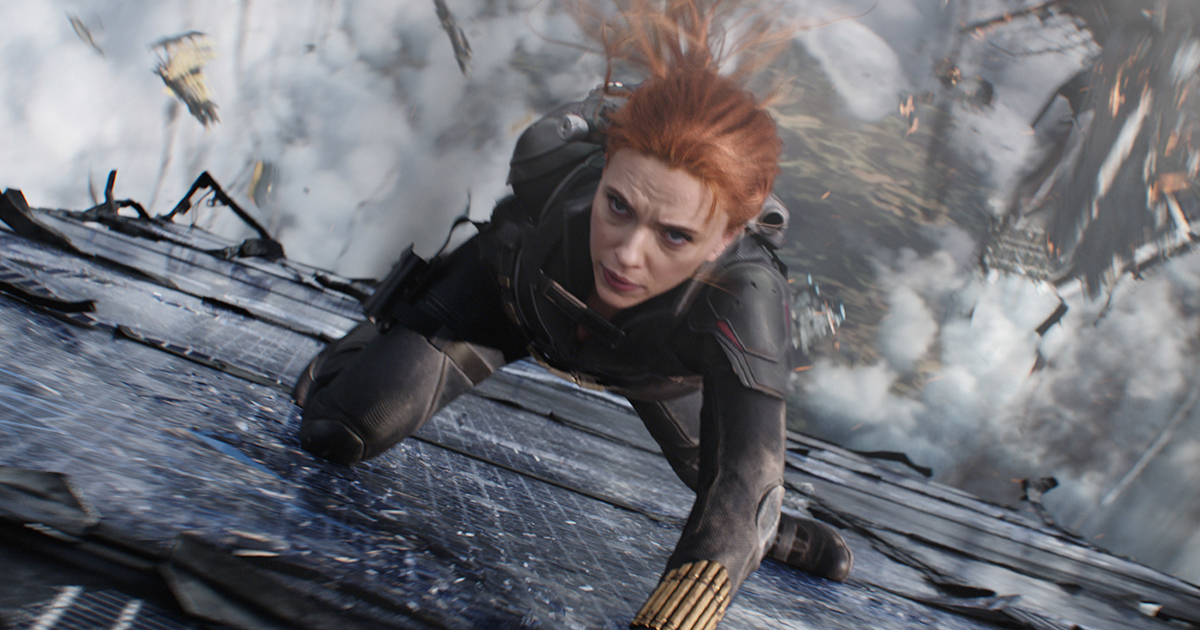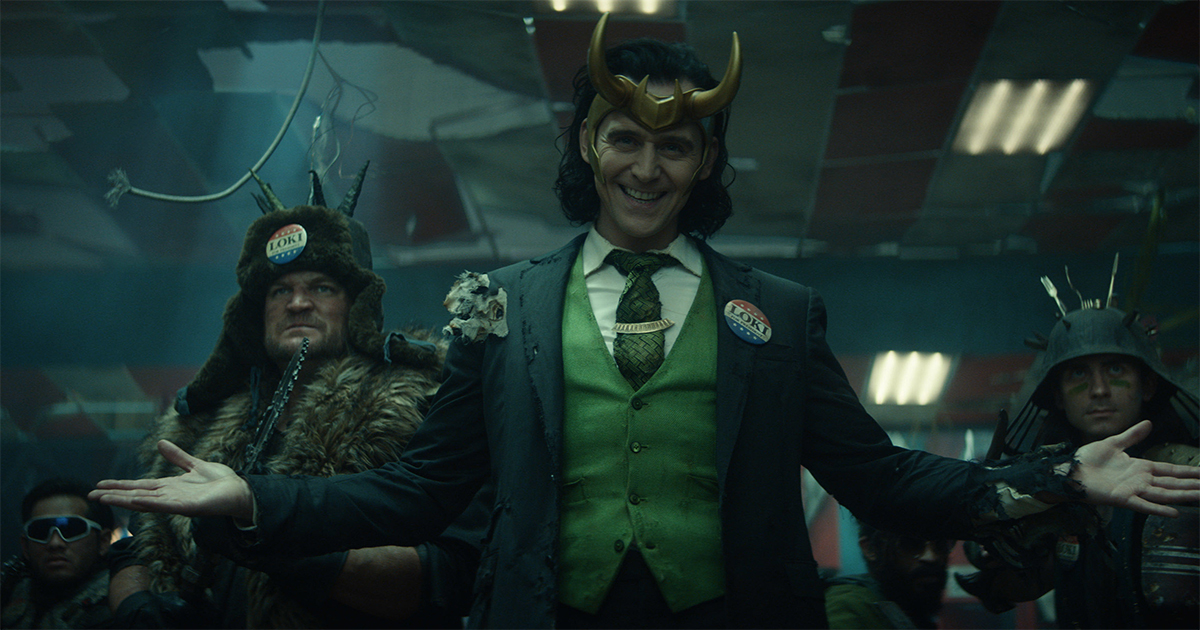
BY JULIAN MITCHELL
The Suicide Squad’s route to the silver screen, and the LCD one if you’re subscribed to HBO Max, has been a stretch. Back to November 10, 2019 and that Instagram post from the official James Gunn account with the director playing a game of “guess the codenames” with some of the “Squad.” Now, here we are as the movie finally breaks cover.
You have to hand it to the Warner Bros. marketing machine — keeping the pot boiling for the movie for nearly two years is quite a feat. But with Gunn there was always a redemption story within a redemption story to fall back on. The New York Times wasted no time in following Gunn’s arc, from his fall from grace from the director’s chair for the MCU, to being temporarily cancelled, to re-surfacing triumphantly.
Dave Itzkoff of The New York Times talks about the day Gunn started trending on Twitter in July 2018. This was the social media reaction to previous ill-advised Tweets he had made. Itzkoff writes, “The Tweets resurfaced, steering waves of criticism his way. Gunn was fired from the planned third Guardian movie and he believed his career was over.”
Some months later, after stars like Zoe Saldana and Chris Pratt came to his defense in an open letter, Gunn was hired back to the film franchise. He then went to work for DC Comics, writing and directing The Suicide Squad, inspired by a book by John Ostrander.
READ MORE: James Gunn Nearly Blew Up His Career. Now He’s Back With ‘The Suicide Squad’ (The New York Times)
Screen Rant’s Josh Plainse explains that Gunn came back from temporary exclusion to be given full creative control for the new DC movie. “Gunn’s villainous ensemble is set to honor Ostrander’s comic by being an unpredictable, R-rated romp. Having complete creative control over the project, Gunn has repeatedly teased The Suicide Squad will have a devastating death toll. He’s warned fans not to get too attached to any characters.”
The Suicide Squad’s was always a redemption piece but perhaps Gunn upscaled that particular tone when he wrote the screenplay. What we do know is that he loves his actors as much as his big sets and highly mobile cameras. “I have loved the Suicide Squad since I was very young,” Gunn states, “they’re one of my favorite groups of comic book anti-heroes. I’m always interested in people who have not lived their best lives and have an opportunity to become something better — a chance at redemption.”
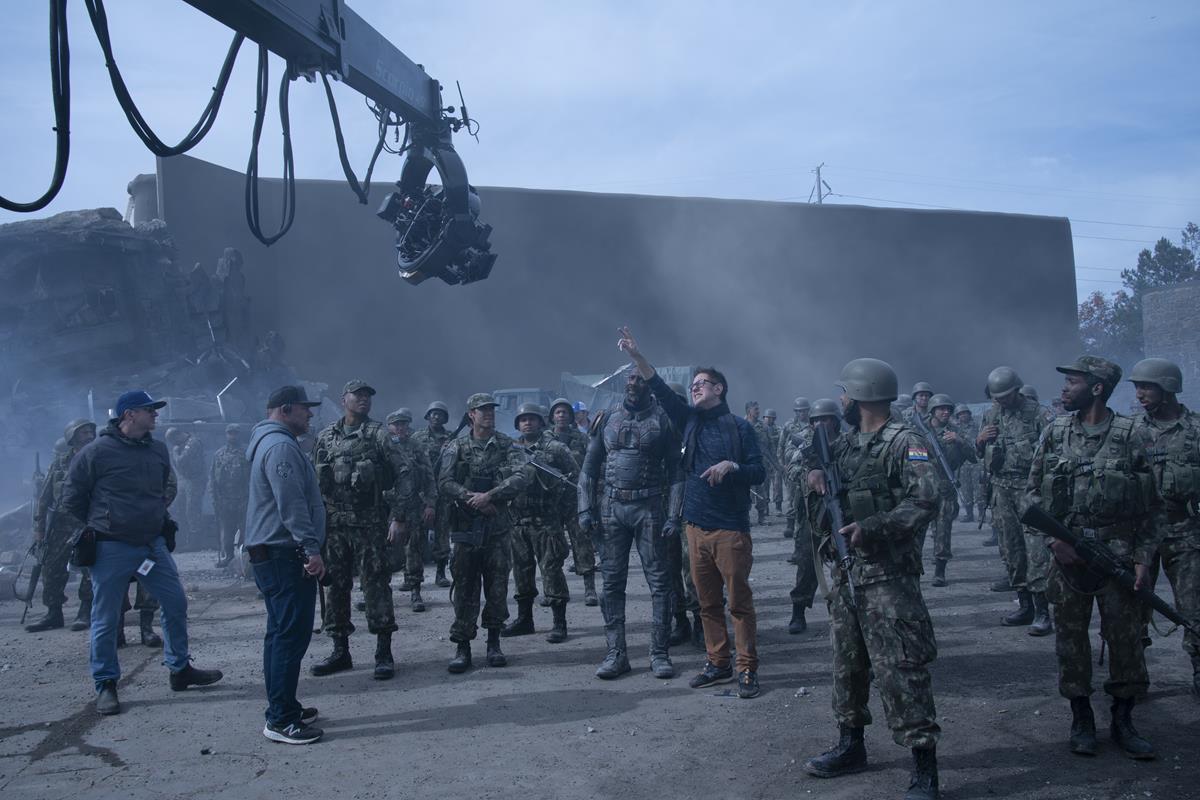
READ MORE: James Gunn Says Suicide Squad 2 Is The Ultimate All-Time Comic Book Movie (Screen Rant)
The scale of The Suicide Squad was massive on every level, with the studio’s largest constructed set pieces to date and a hugely ambitious approach dictating that everything that could be done practically, in-camera, would be.
Gunn assembled what he describes as “by far the best group of production heads I’ve ever had.” That list included production designer Beth Mickle, costume designer Judianna Makovsky, director of photography Henry Braham, visual effects supervisor Kelvin McIlwain, and second unit director/stunt coordinator Guy Norris, among others.
“James conceived the movie as magical realism,” relates Braham, who collaborated with Gunn on Guardians of the Galaxy Vol. 2. “It is a black ops caper with highly dysfunctional super heroes. But the flaws in their characters make them highly relatable to an audience. They have a humanity to them which is what James is interested in portraying.
“In many ways, a documentary approach with strong, rich imagery designed for the big screen is contradictory, but that is the whole point of James’s intent, to set the extraordinary in reality,” Braham says. “Both his characters and the visual language, however fantastic, are based in truth. That is what makes his storytelling so compelling.
“Doing this on such a large scale is a challenge,” he continues. “My approach was to light the sets so that we could move anywhere within them in real time, and to use color as much as light and shade to take the audience’s eye to what is important. The hard part was developing a way to move the camera intuitively with instant response to what is happening in front of the camera in a way designed for the big screen.”
RED cameras were used for the movie, a system that Braham was used to from his Guardians of the Galaxy movies. RED described what the cameras achieved for the production. Together with cinematographer Braham the filmmakers found a fluidity of movement for the large format canvas including IMAX. “Nearly every shot in this movie is on the move,” says Gunn, “and not only that but we wanted to get up close and move around and between people. The tech has advanced to match what I see with my mind.”
Braham says that “One of the things I did was work very closely with RED, because I was interested in their small—physically small—cameras. The small footprint of the camera enables inventive solutions to put the audience inside the scene. With all the new techniques that lightweight, small cameras allow, it set me free to translate James’s visual voice onto the screen.”
READ MORE: Agile Filmmaking Ground ‘The Suicide Squad’ in Magical Realism (RED)
One of the main goals for the filmmakers was to keep the story visceral and real to create a grounded atmosphere for what are over-the-top and sometimes ludicrous characters. “Of course, the story is fantastical,” Braham admits. “We have a walking shark in the movie! So, to make it believable for the audience, we needed a look and feel for the movie that combined fantasy with realism.”
But, the movie has foundations in history that was all too real. Gunn told BBC’s Radio 1 that two war films, Where Eagles Dare and The Dirty Dozen, were the blueprint for his story but also the style of film he sought to make, gritty and real. “A lot of people have forgotten Where Eagles Dare and that is a fantastic, fun old movie. It was as big an inspiration as anything we looked at.”
The Suicide Squad “desperately wants to flout authority,” Richard Lawson writes in his review for Vanity Fair:
“Not just its internal structures of commanders and the commanded, but the film’s own elders — particularly 2016’s Suicide Squad, loudly positioned as a gnarly, anarchic rebuttal to The Avengers but mostly playing by the same formula rules. The new Suicide Squad, directed by Guardians of the Galaxy mastermind James Gunn, wants to show its misbegotten predecessor how it should be done, ramping up the gore and the irony in the hopes of becoming that elusive thing: a genuinely transgressive superhero (or, villain) film.”
It’s easy to see why the studio decided making the new film was worth it, according to Lawson. “Gunn shakes up the sandbox just enough to nearly sell the notion that this film is some kind of upheaval, that it is tearing down paradigms and building something shaggy and idiosyncratic and odd in their place.”
Lawson doesn’t necessarily buy that conclusion however. “It’s not, really, in the end,” he writes. “But maybe it is its own triumph to have at least stretched a rigid medium into new shapes for a little while. The Suicide Squad can’t hold the pose for long, but while it does, it’s an enjoyable flex.”
READ MORE: ‘The Suicide Squad’ Tries Hard to Break Bad (Vanity Fair)
Gunn was a fan of the Suicide Squad from a very young age, writes MovieMaker’s Tim Molloy. The director delighted in DC Comics writer John Ostrander’s stories, which he described as “The Dirty Dozen meets Z-grade supervillains.”
Molloy asked him what exactly it is that “makes a crappy supervillain crappy,” and Gunn explained that it mainly had to do with self-awareness:
“Naming yourself Polka-Dot Man, you’ve got to have a problem with you. Like, the first time he makes his costume, there’s probably guys you go to — the high-end guys who make superhero costumes, the low-end guys — he probably goes to the low-end guy. And he puts it on and he looks in the mirror and he’s like, that is cool. I’m the next Batman. That’s what he thinks, right? Polka-Dot Man thinks he’s gonna be a hero at first. I think that it’s the lack of self-awareness, which is sort of beautiful, because it’s like a lot of us. A lot of these guys are doing things they think are cool. I mean, Peacemaker and Polka-Dot Man and Javelin, those guys think they’re super cool, but they’re all kind of goofy.
READ MORE: Suicide Squad: James Gunn on What Makes a Crappy Supervillain Crappy — Starting With Polka-Dot Man (MovieMaker)
During his interview with Molloy, Gunn also discussed his sobriety, being communicative with fans, how he transitioned from low-budget films to Marvel movies, and how being fired from Disney became the unlikely origin story of The Suicide Squad.
After Gunn’s fall from grace over a slew of unearthed Twitter posts exhibiting questionable humor, the director asked himself if he was just making movies to gain attention.
“And I’m like, yeah, in part, I am,” he told Molloy. “But I thought, that’s not why I want to make movies. What do I enjoy? Because I don’t enjoy that part. That’s just unfulfilling. I don’t like reading about myself, negative or positive, because… I don’t need all that. What I love is creating. I love creating stories. I love molding characters. I love working with actors. I love working with camera operators. I love shooting a film. I love the geometry of putting shots together. I love the creativity of filmmaking.
“And so it put me into a wonderful place that I hadn’t been in for a long time. And that’s what led to The Suicide Squad and choosing that project and making that movie.”
READ MORE: James Gunn Doesn’t Need to Shout: Inside His Journey to The Suicide Squad (MovieMaker)
Listen to the MovieMaker podcast interview with James Gunn in the player below:

